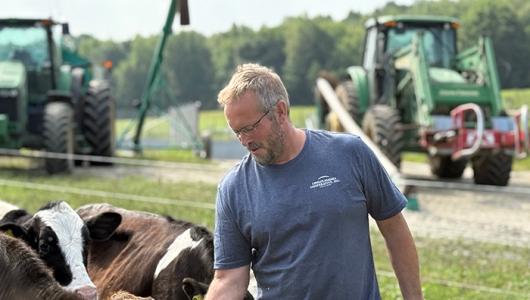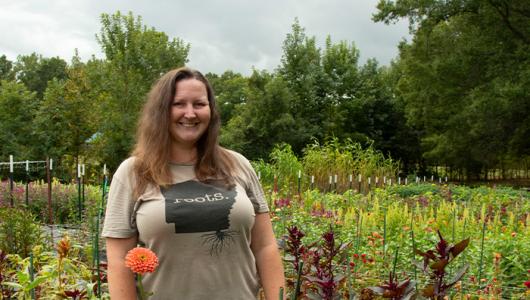
Land stewardship is a concept with many meanings for many people. For multi-generation ranchers like Jim and Mary Genasci, stewardship is an ethic passed down from those who worked the land before them. Although many generations of Genascis cared for the family’s ranch in the Sierra Valley before it passed to them, it was Jim’s father, Attilio, who made the first effort to protect the land in perpetuity by securing a conservation easement on 500 acres in the 1990s.
“He didn’t want houses built on his wife’s ashes behind his house,” Jim said. “He wanted to have it open forever.”
After the first easement, Jim and his dad bought his two brothers’ shares to acquire the ranch. Since then, the Genascis have secured two more easements on their land. One is with the Feather River Land Trust, a local non-profit dedicated to preserving land in the Sierra Valley and the Feather River Watershed.
The other easement is through the Wetland Reserve Easement (WRE) component of the Agricultural Conservation Easement Program (ACEP), which is offered by USDA’s Natural Resources Conservation Service (NRCS) in California. Through WRE, agricultural producers are using NRCS financial and technical assistance to help restore, protect and enhance wetlands on eligible land. The Genascis’ easement sits on more than 287 acres of the wettest, lowest part of their 1470-acre ranch. The pasture floods naturally each spring. It also had existing irrigation infrastructure that, with a few updates, could allow water to back up and irrigate additional wetland habitat. In other words, the parcel was a perfect fit for WRE.

With the help of the California NRCS WRE Team Leader, the Genascis made the updates required by the easement terms. They replaced two concrete dams that had replaced two cedar dams that Attilio had built in the 50s. Jim and Attilio had built concrete structures that were in constant need of repair. Jim said that, before the updates, he'd had to constantly move around rocks to repair holes that would form underneath the dams when the waters rose each spring. With the new structures that were paid for by NRCS under the easement, Jim said he doesn't have to spend weeks repairing holes every year - the dams hold.
The Genascis also installed fencing along the creek to keep their cows out while still letting them graze in the meadow. Because their WRE includes a Grazing Reserve Rights option, the Genascis are able to keep the parcel working and provide and income for the ranch, beyond easement. The parcel under easement has some excellent summer forage, and they didn’t want to lose the feed associated with that. As the Grazing Reserve Rights option of WRP in California allows livestock to graze on enrolled land under a grazing management plan that the ranchers work with NRCS to develop, it was a natural solution for the Genascis.
Jim said that, beyond the addition of the fences, the plan changed the timing of how they’d been grazing the parcel previously, but only by a couple of weeks. Ultimately, it wasn’t a big shift for the ranching family to make.
“The only thing it’s really affected is that there’s more grass down there and the cows can stay on that area longer,” he said.
In a record-breaking drought like the one California currently faces, keeping water on the landscape and maintaining its ability to sustain livestock is a daunting task. Although the Genascis are affected by the dry conditions, their WRE project has helped them maximize and maintain the benefits of a flooded pasture.
“Life is so short, I think you have to do things that make you feel good,” Jim said. “I want to think that I have done something that will have a significant impact for future generations. With easements, you keep the beauty and the productivity of the ranch for perpetuity. Hopefully, our grandchildren and their children will appreciate the open magnificence of the ranch.”
For more information contact Nate Key, WRE Team Leader, Natural Resources Conservation Service in California.


